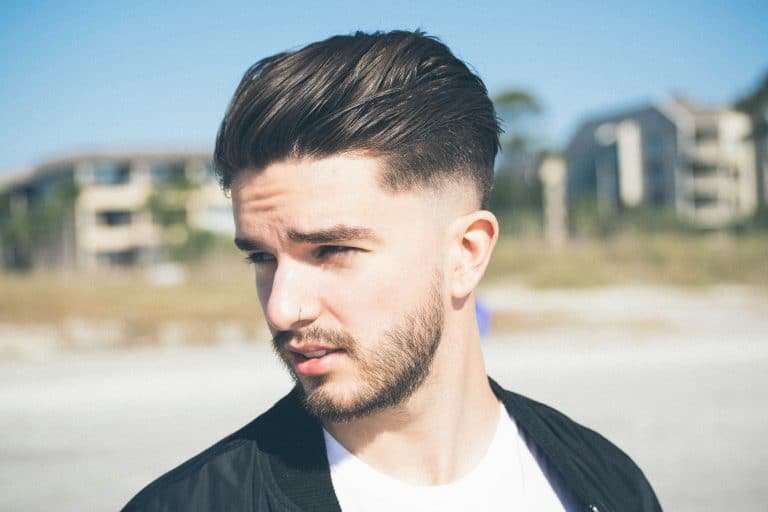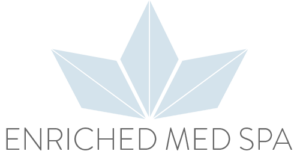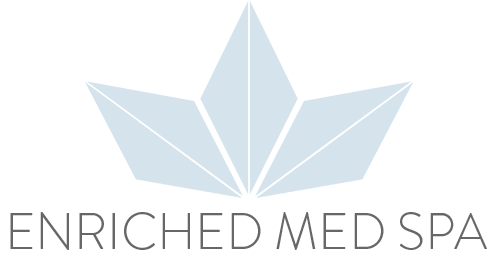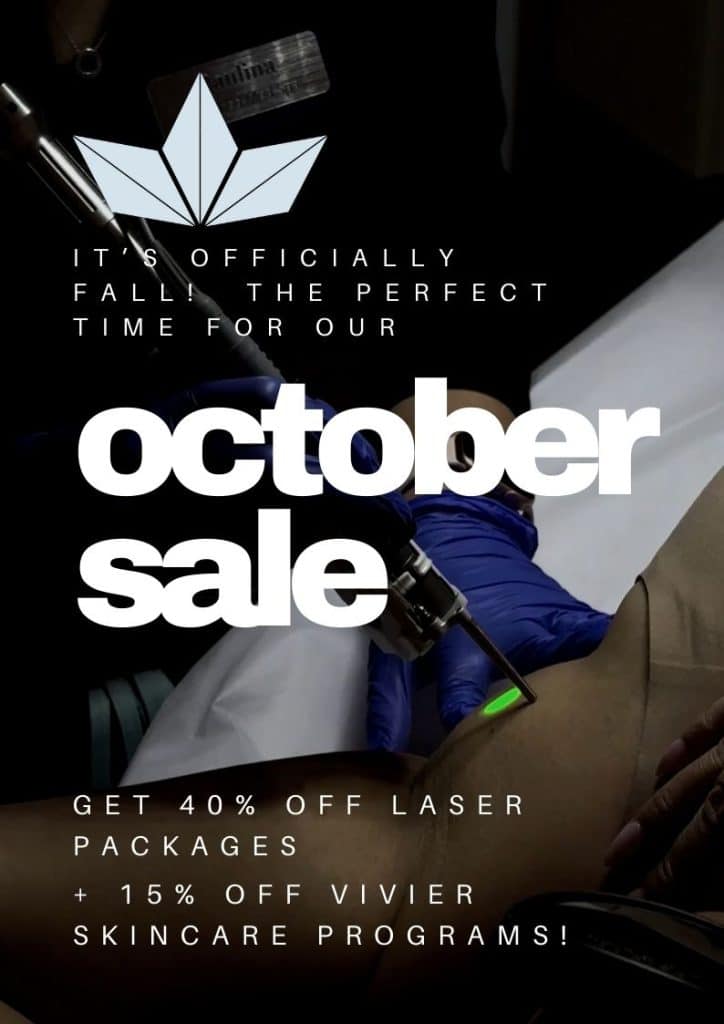Botox, or botulinum toxin type A, has long been hailed for its remarkable ability to smooth out wrinkles and provide a youthful appearance. However, beyond these cosmetic applications, Botox boasts an array of medical benefits that can be experienced when applied to various parts of the body.
1. Forehead
Botox for the forehead. This area, being so front and centre, often bears the telltale signs of aging, stress, or environmental damage. Understanding the procedure, its benefits, and potential side effects can help those considering this treatment make an informed decision.
Procedure Overview:
1. Consultation: Before diving into the treatment, a comprehensive consultation is typically the first step. This involves discussing the patient’s medical history, aesthetic goals, and any potential allergies or previous reactions to treatments.
2. Preparation: The forehead is cleansed to ensure that it’s free from any makeup, dirt, or oils. Some practitioners might apply a numbing cream, although many find the injections tolerable without it.
3. Administration: Botox is administered via tiny injections using a fine needle. The practitioner strategically injects specific forehead muscles responsible for the formation of wrinkles. Typically, multiple injections are made across the forehead, but the exact number can vary based on the treatment plan.
4. Post-treatment care: Patients are often advised to avoid lying down for 3-4 hours post-injection and to avoid any rigorous physical activity for 24 hours. This helps in preventing the migration of the toxin to undesired areas.
Benefits:
1. Smoother Forehead: Botox works by temporarily paralyzing the underlying muscles responsible for wrinkles. This results in a notably smoother forehead free of horizontal lines.
2. Non-Surgical Rejuvenation: Without the need for incisions or prolonged recovery times, Botox offers a minimally invasive solution to age-related forehead lines.
3. Quick Procedure: The actual Botox injections typically take no longer than 10-20 minutes, making it a feasible option even for those with busy schedules.
4. Predictable Results: Given its widespread use and thorough research, results from Botox treatments, when done by experienced practitioners, are predictable and consistent.
Potential Side Effects:
While Botox treatments are generally considered safe, some potential side effects, particularly when the toxin is administered incorrectly, include:
- Drooping eyelids or eyebrows, usually rectify themselves in a few weeks.
- Mild pain or bruising at the injection site.
- Headache or flu-like symptoms.
- Less commonly, double vision or dry eyes.
2. Crow’s Feet
Crow’s feet, affectionately termed after the tiny, branching lines that resemble a bird’s footprints, are the delicate wrinkles that fan out from the outer corners of the eyes. Commonly associated with aging, but also often precipitated by habitual facial expressions, sun exposure, or genetics, these lines can add years to one’s appearance. Enter Botox – a scientifically recognized solution for minimizing these lines and rejuvenating the eye area.
Procedure Overview:
1. Consultation: Prior to any treatment, a thorough consultation is imperative. This session allows the practitioner to evaluate the depth and distribution of the crow’s feet, discuss the client’s expectations, and review any medical contraindications.
2. Preparation: The skin around the eyes is cleaned and sanitized to remove any residual makeup or impurities. Though Botox injections cause minimal discomfort, a numbing cream or cold pack might be applied to further alleviate any potential pain.
3. Administration: Utilizing a fine needle, the practitioner injects small amounts of Botox into the orbicularis oculi, the muscle that encircles the eye and is responsible for squinting and producing crow’s feet. The precision and amount of Botox used are crucial to ensure the natural mobility of the eyes is not compromised.
4. Post-treatment care: Patients are often advised to steer clear of vigorous physical activity for 24 hours post-treatment and to stay upright for at least 4 hours. This precaution helps to prevent the migration of the toxin to unintended areas.
Benefits:
1. Softened Appearance: Botox effectively softens and often eliminates the appearance of crow’s feet, granting the eyes a more youthful and refreshed look.
2. Preventative Action: By temporarily paralyzing the muscles that lead to the formation of these wrinkles, Botox can act as a preventative measure, slowing the deepening or spread of these lines over time.
3. Quick and Minimal Downtime: A Botox session targeting crow’s feet usually wraps up within 10-15 minutes, with no significant downtime. Mild redness or swelling post-injection subsides within a few hours.
4. Reliable Outcomes: When administered by experienced hands, Botox offers predictable and satisfactory results that can last anywhere from 3 to 6 months, depending on individual factors.
Potential Side Effects:
Botox, when done right, is a safe procedure. However, some potential side effects might include:
- Bruising or swelling at the injection site.
- Temporary headache.
- In rare instances, if Botox migrates, it can cause eyelid drooping. This effect is temporary and usually resolves within a few weeks.
- Dryness or tearing in the eyes.
In essence, Botox treatments targeting crow’s feet offer a potent solution for those looking to combat these telltale signs of aging and sun exposure. By opting for this minimally invasive treatment, one can attain a revitalized and youthful gaze that mirrors vitality and vivacity.
3. Side of the Nose
 Botox’s application to address the fine lines on the side of the nose, commonly termed “bunny lines”, is less frequently discussed but equally transformative. Bunny lines appear when we scrunch our nose, laugh, or even sometimes at rest, creating horizontal wrinkles on both sides of the nose. For those seeking a more youthful and refreshed appearance, understanding the nuances of this specific Botox treatment can be enlightening.
Botox’s application to address the fine lines on the side of the nose, commonly termed “bunny lines”, is less frequently discussed but equally transformative. Bunny lines appear when we scrunch our nose, laugh, or even sometimes at rest, creating horizontal wrinkles on both sides of the nose. For those seeking a more youthful and refreshed appearance, understanding the nuances of this specific Botox treatment can be enlightening.
Procedure Overview:
1. Consultation: An initial meeting with a skilled professional is paramount. The consultation assesses the prominence of bunny lines, explores patient desires, and evaluates the appropriateness of Botox as a solution.
2. Preparation: The skin surrounding the nose is cleansed and disinfected. To enhance comfort during injections, a topical numbing agent might be applied.
3. Administration: Using a very fine needle, a small quantity of Botox is injected into the muscles responsible for the creation of bunny lines, primarily the nasalis muscle. The exact quantity and depth depend on the individual’s anatomy and the severity of the lines.
4. Post-treatment care: The procedure is relatively quick, often completed in less than 20 minutes. Patients can typically resume daily activities immediately, though they might be advised to avoid strenuous exercise and direct sun exposure for a short period post-treatment.
Benefits:
1. Smoothed Appearance: One of the most notable benefits of treating bunny lines with Botox is the achievement of a smoother and more harmonized facial appearance.
2. Prevention: Early Botox treatments can prevent bunny lines from becoming more deeply etched over time.
3. Minimal Downtime: This non-invasive treatment involves minimal recovery time, making it a convenient option for many.
4. Long-lasting Results: The effects of Botox in the treatment of bunny lines can last anywhere from 3 to 6 months, varying based on individual factors.
Potential Side Effects:
Like any treatment, there are potential side effects to consider:
- Redness, swelling, or minor bruising at the injection sites, which usually resolve within a few days.
- Less commonly, there might be a temporary headache or flu-like symptoms.
- Rarely, if the Botox migrates or is injected improperly, there can be unintended effects on nearby facial muscles, leading to asymmetry or unwanted facial expressions.
4. Jaw
The jawline is an integral component of one’s facial structure, contributing significantly to the overall silhouette and profile. While many associate Botox primarily with wrinkle relaxation, its therapeutic and aesthetic versatility spans beyond, including remarkable applications in jawline refinement and treatment of certain jaw-related conditions. Let’s unfold the specifics of using Botox for the jaw.
Procedure Overview:
1. Consultation: Every Botox treatment commences with a detailed consultation. Here, the practitioner evaluates the jaw’s structure, listens to the patient’s goals, and examines any potential concerns like bruxism (teeth grinding) or TMJ disorders.
2. Preparation: The target area is cleaned to eliminate any surface impurities or makeup. While Botox injections are relatively low on the discomfort scale, a numbing agent may be applied to optimize patient comfort.
3. Administration: Botox is carefully injected into the masseter muscle – the prominent muscle responsible for chewing and often linked to jawline bulkiness. Precise injection points and dosages ensure that only the targeted portions of the muscle are affected, leaving the surrounding areas and functions unaffected.
4. Post-treatment care: Patients might be counseled to avoid strenuous activities and lying down immediately post-procedure. These precautions ensure that the Botox remains in the desired location and does not migrate.
Benefits:
1. Jawline Slimming: For individuals with a square or bulky jawline, often due to an overactive masseter, Botox helps in slimming down the jaw, providing a more oval or heart-shaped face.
2. Relief from Bruxism: Botox can reduce symptoms of bruxism by relaxing the overactive chewing muscles, decreasing the force of involuntary teeth grinding and clenching.
3. TMJ Relief: Temporomandibular joint (TMJ) disorders, which can cause pain in the jaw joint and muscles controlling jaw movement, might find relief with Botox injections.
4. Non-Surgical Approach: Botox provides a non-invasive alternative to surgical interventions, allowing for facial contouring without the associated risks or downtime of surgery.
5. Temporary and Reversible: For those uncertain about permanent changes, Botox’s effects on the jaw are temporary, typically lasting between 3 to 6 months.
Potential Side Effects:
Though Botox is generally safe, especially when administered by qualified professionals, potential side effects can include:
- Bruising or swelling at the injection site.
- Temporary weakness or loss of ability to tightly clench the teeth.
- Rarely, there might be an asymmetry in jaw muscle relaxation, which can usually be corrected with a follow-up treatment.
Given the jaw’s functional significance, the choice of practitioner becomes crucial. Only a skilled and experienced injector should administer Botox in this area, as expertise ensures both aesthetic finesse and functional safety.
When used in the jaw, Botox unfolds as a dual-purpose tool – it’s not only an aesthetic enhancer but also a therapeutic ally against conditions like bruxism and TMJ disorders. Those seeking a sleeker jawline or relief from jaw-related discomfort might find Botox to be an ideal, minimally invasive solution.
5. Neck
The neck, often termed as the ‘forgotten frontier’ in the world of cosmetic enhancements, is one of the first places where signs of aging can manifest. With its delicate skin and susceptibility to environmental factors, the neck can showcase lines, bands, and wrinkles that might not reflect how young one feels on the inside. Botox, renowned for its transformative effects on the face, also offers promising results for neck rejuvenation.
Procedure Overview:
1. Consultation: This initial step is where the practitioner assesses the neck’s skin, musculature, and the specific concerns of the patient, whether they’re horizontal lines, ‘turkey neck’, or vertical bands.
2. Preparation: The area to be treated is cleaned thoroughly, ensuring a sterile environment. Though the pain from the injections is generally minimal, a topical anesthetic might be applied to increase comfort during the procedure.
3. Administration: Botox is injected strategically into the platysma muscle of the neck. This muscle stretches from the collarbone to the jaw and is primarily responsible for the appearance of vertical bands and sagging. By targeting the platysma, Botox helps relax its pull, softening bands and providing a lifting effect.
4. Post-treatment care: Patients are typically advised to refrain from lying down for about 4 hours post-injection and to sidestep any vigorous neck movements for approximately 24 hours. This helps to prevent unwanted migration of the product.
Benefits:
1. Smoother Neck Appearance: Botox helps alleviate the presence of horizontal ‘necklace lines’ and vertical platysmal bands, rendering a smoother appearance to the neck.
2. Non-surgical Neck Lift: Botox can offer a subtle lifting effect, ideal for those who aren’t ready for surgical interventions but wish for a rejuvenated neck profile.
3. Quick and Convenient: The entire procedure usually lasts between 15 to 30 minutes, making it possible to undergo during a lunch break, with minimal to no downtime.
4. Prolonged Results: Depending on individual factors, Botox effects on the neck can last anywhere from 3 to 6 months.
Potential Side Effects:
While Botox treatments are generally safe, potential side effects, particularly in the hands of an inexperienced injector, can include:
- Bruising, swelling, or redness at the injection sites.
- Temporary muscle weakness in the treated area.
- Rarely, issues with swallowing if the Botox inadvertently affects deeper neck muscles.
- An uneven or asymmetric result, which might require a touch-up.
It’s crucial to stress the importance of an experienced practitioner. Given the intricate anatomy of the neck and its proximity to vital structures, a nuanced understanding and a skilled hand are essential for optimal, safe results.
In essence, Botox’s application in the neck area serves as a testament to its multifaceted potential in cosmetic medicine. For those keen on addressing the signs of aging in the neck without committing to surgical interventions, Botox emerges as a promising, minimally invasive contender.
6. Armpits
For many, the term ‘Botox’ primarily evokes images of wrinkle-smoothing and age-defying treatments. However, beyond its renowned cosmetic applications, Botox offers several therapeutic uses, one of which is effectively managing excessive underarm sweating, medically termed as axillary hyperhidrosis. Here’s an in-depth look at how Botox is transforming lives by addressing this concern in the armpit area.
Procedure Overview:
1. Consultation: Every procedure starts with a consultation where the medical professional assesses the severity of the sweating issue, inquires about previous treatments, and determines the patient’s eligibility for Botox.
2. Preparation: Prior to the procedure, the underarm area is cleaned and shaved. A starch-iodine test may be performed to pinpoint the areas of most intense sweating. The skin is then sanitized, and a topical numbing cream might be applied for enhanced comfort during the injections.
3. Administration: Using a fine needle, small amounts of Botox are injected into multiple points in each armpit. The toxin works by blocking the nerve signals responsible for activating sweat glands, thereby reducing sweat production in the treated area.
4. Post-treatment care: Patients can usually resume their regular activities immediately. However, they might be advised to avoid intense physical activity or excessive heat for a day or two post-procedure to maximize treatment efficacy.
Benefits:
1. Significant Reduction in Sweating: Most patients witness a notable decrease in underarm sweating within 2-7 days post-treatment, with optimal results typically evident within 2 weeks.
2. Long-lasting Relief: The sweat-reducing benefits of Botox for hyperhidrosis can last anywhere from 4 to 14 months, depending on individual factors.
3. Boosted Confidence: Many sufferers of excessive sweating find their social interactions and self-confidence hampered. With reduced underarm sweating, they often report feeling more self-assured in both personal and professional settings.
4. Safe and FDA-approved: Botox received FDA approval in 2004 for treating axillary hyperhidrosis in patients who do not find antiperspirants effective.
Potential Side Effects:
While Botox injections in the armpits are largely deemed safe, some potential side effects include:
- Temporary pain or bruising at the injection site.
- Potential muscle weakness in the adjacent areas, though rare.
- Mild and temporary flu-like symptoms.
- In extremely rare cases, if Botox spreads from the injection site, it could cause more significant side effects. It’s important to report any unusual or severe symptoms to your medical professional.
To ensure the best possible results and to minimize potential side effects, it’s paramount to have the procedure performed by a certified professional familiar with the intricacies of Botox treatments for hyperhidrosis.
Botox’s application for the armpit area addresses far more than mere aesthetics; it offers a profound improvement in the quality of life for those beleaguered by excessive sweating. It underscores Botox’s versatility and its potential to transform lives beyond the realms of cosmetic enhancements.
7. Palms of the Hands and Soles of the Feet
Botox’s spectrum of applications transcends mere facial aesthetics. One lesser-known yet impactful domain of its use pertains to addressing hyperhidrosis, or excessive sweating, particularly in regions like the palms of the hands and the soles of the feet. These areas, often resistant to traditional treatments, can experience profound relief through Botox. Here’s a detailed insight into this transformative procedure.
Procedure Overview:
1. Consultation: The process invariably starts with an in-depth consultation. The medical professional evaluates the severity of sweating, reviews any prior treatments, and assesses the suitability of Botox for the individual.
2. Preparation: Both the palms and soles are cleansed. To map out the precise points of excessive sweating, a Minor’s iodine-starch test might be performed. Given the heightened sensitivity of these areas, a potent numbing cream or local anesthesia is usually applied before the injections to mitigate discomfort.
3. Administration: Botox is meticulously injected into multiple predetermined points across the palms or soles. Botox operates by obstructing the neurotransmitter that activates sweat glands, thereby curbing excessive sweat production.
4. Post-treatment care: Patients may be advised to avoid strenuous activities involving their hands or feet for about 24-48 hours. This ensures the injected Botox remains localized to the intended sites.
Benefits:
1. Dramatic Reduction in Sweating: Botox has shown to significantly diminish sweating in the treated regions. Maximum results are typically observed within two weeks post-treatment.
2. Extended Relief: One of Botox’s hallmarks in this application is its durability. The effects can last from 6 to 12 months, depending on individual factors and the specific area treated.
3. Enhanced Quality of Life: Excessive sweating of the palms and soles can be socially and professionally debilitating, impacting simple activities like holding a pen, shaking hands, or wearing certain footwear. Botox treatment can dramatically improve these aspects of daily living.
4. Established Safety Profile: While more commonly known for facial treatments, Botox’s use for hyperhidrosis in these regions is backed by numerous studies and clinical experiences, attesting to its safety and efficacy.
Potential Side Effects:
Though Botox treatments in the palms and soles are generally safe, there are potential side effects to consider:
- Temporary pain, bruising, or swelling at the injection sites.
- Potential transient muscle weakness in the treated areas.
- Mild flu-like symptoms.
- In the case of the palms, there might be a temporary decrease in grip strength.
The expertise of the injector plays a pivotal role in both the efficacy of the treatment and the mitigation of potential side effects. Therefore, opting for a seasoned and certified professional is paramount.
Botox’s treatments of hyperhidrosis of the palms and soles underscores its multifaceted therapeutic potential. It’s a beacon of hope for many who’ve grappled with the challenges of excessive sweating, offering them not just drier skin, but a rejuvenated sense of confidence and normalcy in their daily lives.
8. Scalp
The ever-evolving landscape of cosmetic treatments continues to surprise and delight with novel applications of well-established products. One such innovative treatment is the use of Botox on the scalp. While its reputation is anchored in facial rejuvenation, this remarkable neurotoxin is now being recognized for its potential benefits on the scalp. Let’s embark on a detailed exploration.
Procedure Overview:
1. Consultation: An initial consultation with a qualified professional sets the stage. Here, the specific needs, goals, and suitability of the patient for scalp Botox are discussed.
2. Preparation: The scalp is cleaned and sanitized. Depending on the patient’s comfort level and the number of injections needed, a numbing agent might be applied to alleviate potential discomfort.
3. Administration: Botox is carefully injected into various points on the scalp. The exact number and depth of injections depend on the desired outcome, whether it’s for hyperhidrosis (excessive sweating) or other reasons.
4. Post-treatment care: Patients can generally resume their daily activities right after the treatment. However, they might be advised to avoid heavy physical exercise, hats, or tight headbands for a day or two to ensure optimal results.
Benefits:
1. Combat Scalp Sweating: One of the primary reasons individuals seek Botox treatment for the scalp is to combat excessive sweating. This not only extends the life of a hairstyle but is also a boon for events or activities where sweating can be a concern.
2. Prolong Hairstyles and Blowouts: By reducing sweat, Botox can help hairstyles, particularly professional blowouts, last longer, offering both convenience and cost-effectiveness.
3. Safety and Efficiency: The procedure is quick, often taking less than 30 minutes, with minimal discomfort and side effects.
Potential Side Effects:
While Botox for the scalp is considered safe, there are a few potential side effects:
- Mild pain or discomfort at the injection sites.
- Temporary headaches or scalp tightness.
- Small bumps or redness, which usually subside within a few hours.
- Rarely, an allergic reaction to Botox can occur.
It’s crucial to have the procedure conducted by an experienced professional, ensuring that the Botox is administered correctly and potential side effects are minimized.
In the grand tapestry of cosmetic innovations, Botox for the scalp might seem like a minute thread. However, its implications are vast, especially for those seeking a solution to an often unspoken yet bothersome issue. In today’s fast-paced world, where every moment counts, extending the life of a hairstyle or feeling confident irrespective of the day’s challenges is not just a cosmetic boon—it’s an empowering lifestyle enhancement.
With such diverse applications and accompanying benefits, it’s clear that Botox transcends beyond just aesthetics. Whether you’re looking to rejuvenate your skin, redefine facial contours, or tackle excessive sweating, Botox emerges as a potent solution.
If you’re considering tapping into the myriad benefits of Botox, it’s essential to consult with professionals who understand its nuances. Reach out to Enriched MedSpa today, and let’s curate a personalized treatment plan tailored to your needs.










